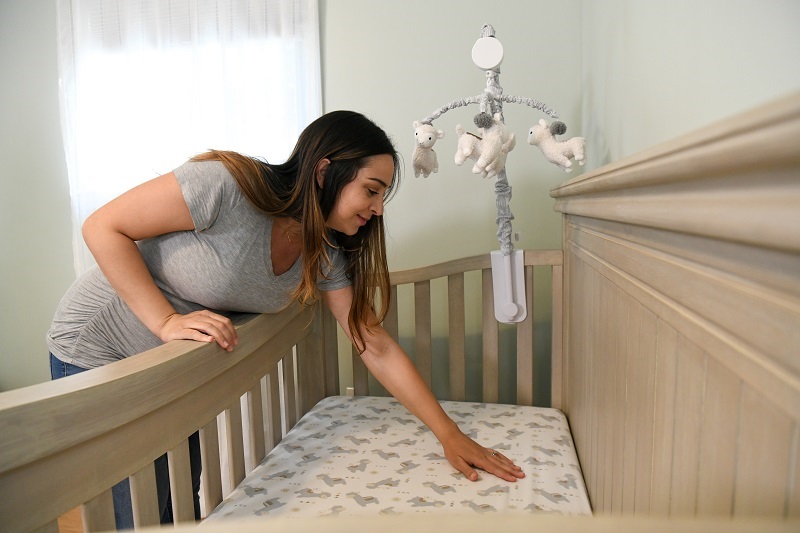Making the Move: When and How to Transition Your Baby to a Crib

July 24, 2023
Are they still breathing? Okay, good. How about now?
As a new parent, it’s common to obsess over your baby’s safety, and you may have found comfort in them sleeping closeby in a bassinet.
But as your baby continues to get bigger, they will eventually outgrow the cradle or bassinet. It’s important to know when to make the switch to a crib to give your baby the best quality of sleep and safest sleep too.
Timing the Transition
Most babies are ready to transition to a crib between 3 to 6 months of age. However, every baby is different, so it's important to look for signs of readiness, such as increased mobility or outgrowing the bassinet.
Clear signs it’s time to transition:
- If your baby can roll over, or sit up, they need to be moved to a crib.
- If your baby exceeds the weight or height limit on their bassinet, they should be moved to a larger bed.
“Avoid making the transition during major life changes or disruptions, such as moving to a new house or traveling extensively. A calm and familiar environment will help your baby adjust better,” says pediatrician Charita Csiky, M.D., FAAP.
Preparing the Crib
- Ensure that the crib meets safety standards and has a firm mattress that fits snugly.
- Remove any loose bedding, pillows, or stuffed animals from the crib to reduce the risk of suffocation.
- Place the crib in your bedroom initially if you plan to room-share before transitioning your baby to their own room. The American Academy of Pediatrics recommends sharing the same room (but not in the same bed) as your baby for at least the first six months.
- If the crib will be in another room, install a baby monitor to keep a close eye on your little one while they sleep.
- Use a sleep sack or wearable blanket instead of loose blankets to ensure your baby stays warm and safe throughout the night.
Gradually Transition for Naps & Establish a Bedtime Routine
Start by introducing daytime naps in the crib to help your baby get used to the new sleeping environment. This will allow them to associate the crib with positive experiences.
Implement a consistent bedtime routine that signals to your baby that it's time to sleep.
- This can include activities like a warm bath, reading a book, or singing a lullaby.
- Ensure the room is dimly lit and create a calm and soothing atmosphere.
- Make sure your baby is well-fed, dry, and comfortable before putting them down to sleep. This reduces the chances of them waking up due to hunger or discomfort.
- Your baby should be placed in the crib drowsy, but not fully asleep.
Responding to Crying or Discomfort
Be prepared for some resistance during the transition. If your baby cries or shows signs of discomfort, offer reassurance by patting their back or singing softly.
Avoid immediately picking them up and bringing them back to your bed, as it may create confusion and hinder the transition process.
“It can be difficult to hear your baby cry, and not want to immediately lift them for comfort, but you want your baby to learn how to fall asleep on their own, in their new bed,” says Dr. Csiky. “If you hold your baby to fall asleep, if they wake up, it can cause distress to notice they’re in a new environment, and you are not there. It’s best to let them learn to fall asleep in the crib, on their own.”
Remember, each baby is unique, and the transition to a crib may take time. Be patient, consistent, and offer plenty of love and support throughout the process.
Transitioning your baby to a crib is an important milestone in their growth and development. With careful planning, preparation, and a little bit of patience, you can make this transition a positive experience for both you and your baby.
Next Steps & Resources:
- Our source: Charita Csiky, M.D., FAAP
- To make an appointment with Dr. Csiky or a physician near you, call 800-822-8905 or visit our website.
The material provided through HealthU is intended to be used as general information only and should not replace the advice of your physician. Always consult your physician for individual care.






